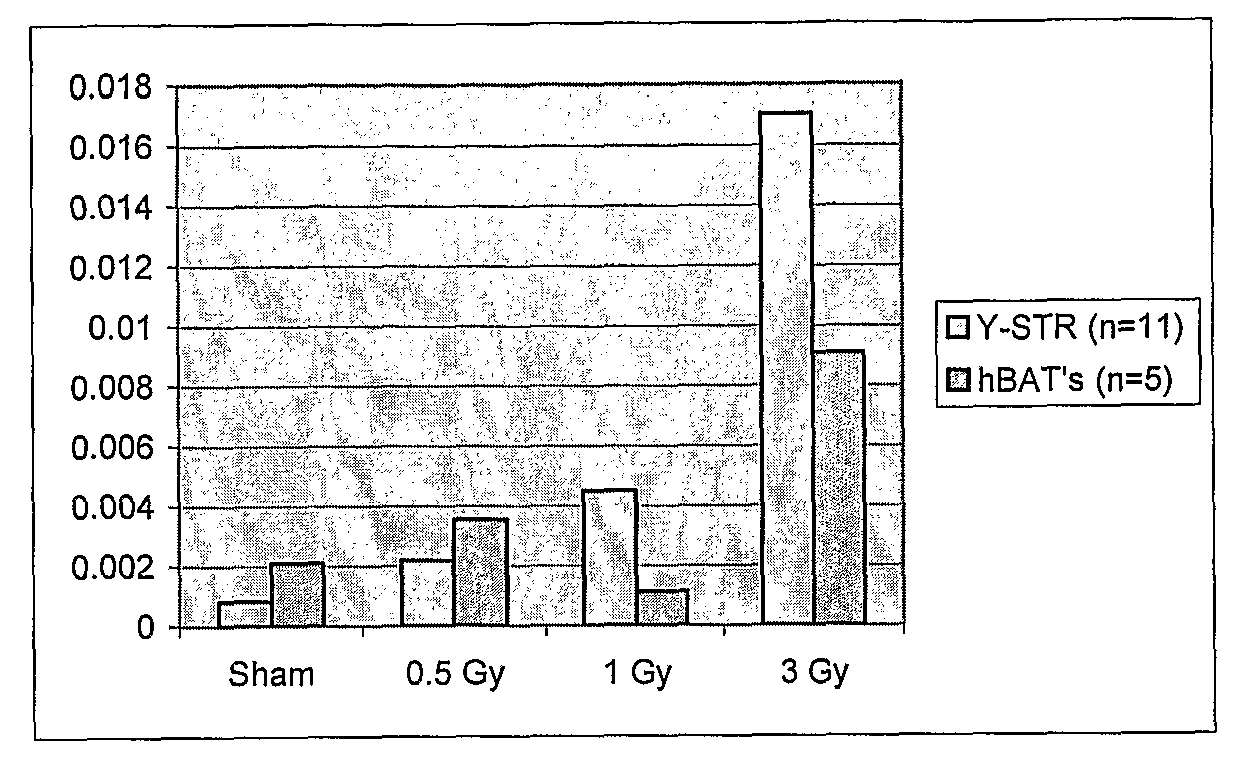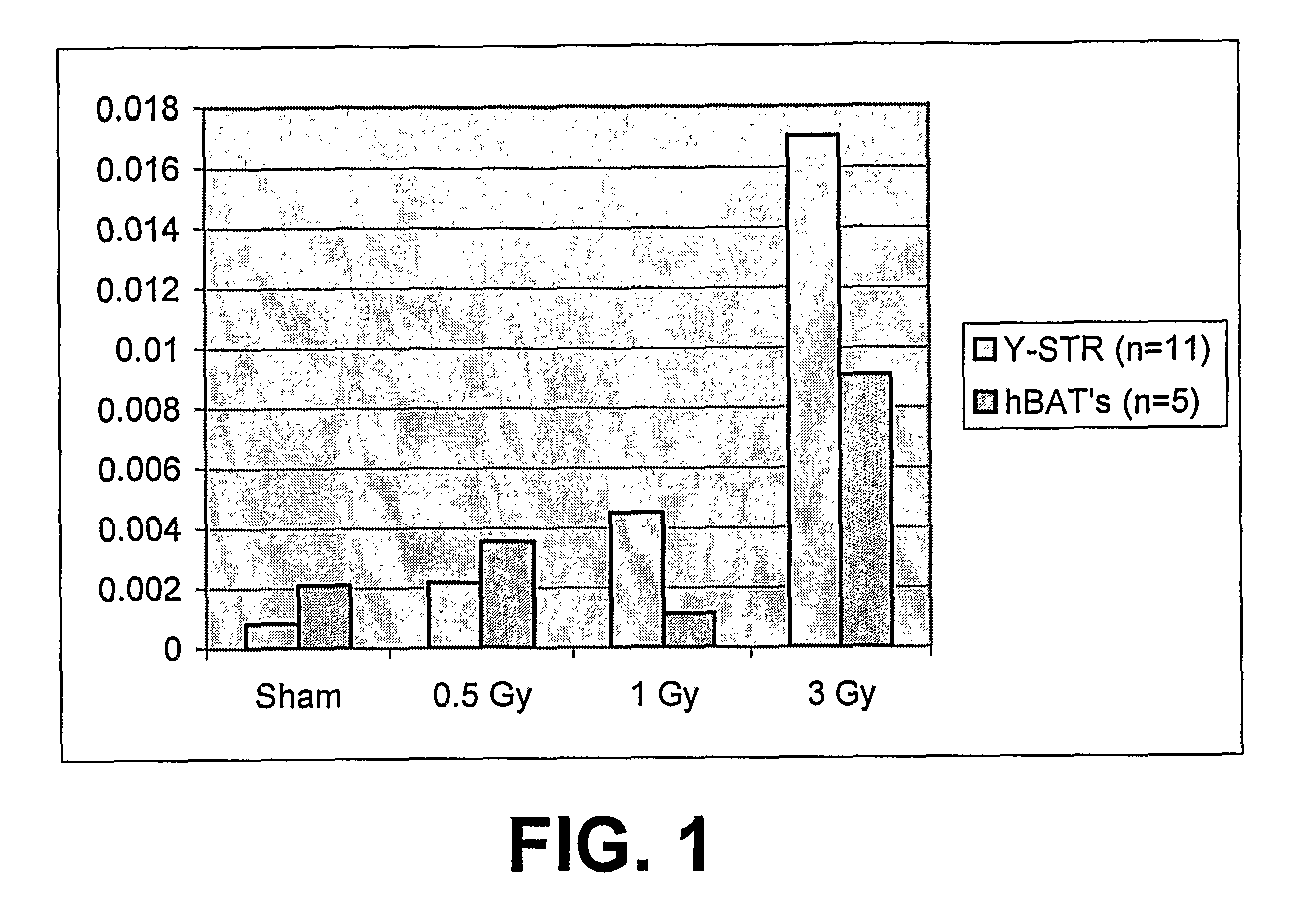Methods and Kits for Detecting Germ Cell Genomic Instability
a technology for germ cell genomic instability and kits, which is applied in the field of methods and kits for detecting germ cell genomic instability, can solve the problems of genomic instability, differences between the the expected amplification product, and so as to achieve the expected size of the amplification product
- Summary
- Abstract
- Description
- Claims
- Application Information
AI Technical Summary
Benefits of technology
Problems solved by technology
Method used
Image
Examples
examples
A. Detection of Mutations in Radiation Treated Cultured Human Fibroblast and Cell Lines.
[0046]Cell culture and irradiation. Male human fibroblast cell line No. AG01522 from Coriell Cell Repository was grown in MEM Eagle-Earle BSS media with 15% fetal bovine serum and 2× concentration of essential and non-essential amino acids and vitamins with 2 mM L-glutamine. Cell cultures were grown at 37° C. and 5% CO2 under sterile conditions. Exponentially growing cells were plated in T-25 tissue culture flasks and were irradiated at room temperature with a single dose 0.5, 1 or 3 Gy of 1 GeV / nucleon 56Fe ions accelerated with the Alternating Gradient Synchrotron (AGS) at the Brookhaven National Laboratory at a rate of 0.5 Gy / min. Following irradiation, media was replaced and cells grown for 3 days then collected and frozen at −70° C. until ready for DNA extraction.
[0047]Small-pool PCR amplification of microsatellite repeats. Small-pool PCR (SP-PCR) amplification of loci including mononucleoti...
PUM
| Property | Measurement | Unit |
|---|---|---|
| size | aaaaa | aaaaa |
| genomic stability | aaaaa | aaaaa |
| frequency | aaaaa | aaaaa |
Abstract
Description
Claims
Application Information
 Login to View More
Login to View More - R&D
- Intellectual Property
- Life Sciences
- Materials
- Tech Scout
- Unparalleled Data Quality
- Higher Quality Content
- 60% Fewer Hallucinations
Browse by: Latest US Patents, China's latest patents, Technical Efficacy Thesaurus, Application Domain, Technology Topic, Popular Technical Reports.
© 2025 PatSnap. All rights reserved.Legal|Privacy policy|Modern Slavery Act Transparency Statement|Sitemap|About US| Contact US: help@patsnap.com



